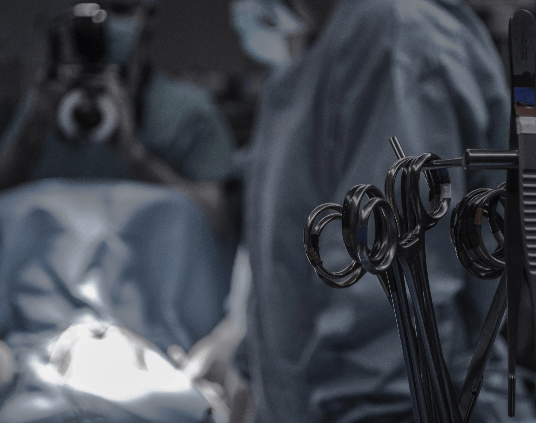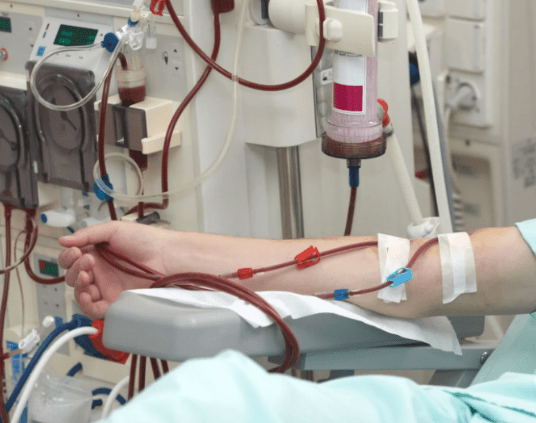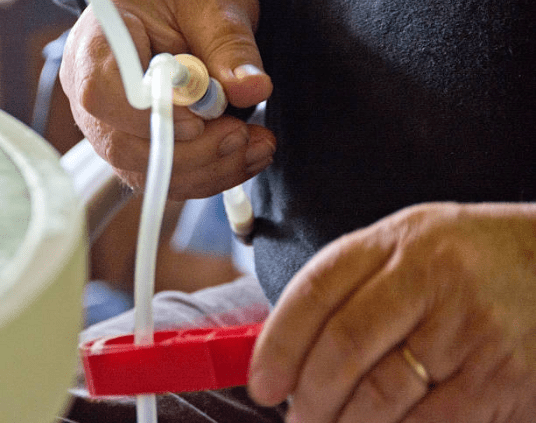Finding the most suitable option for Kidney Replacement Therapy
Informative DialysisPublished on 10 Aug, 2022

Which Kidney Replacement Therapy Option Is Right For Me?
When you have reached advanced kidney disease, your doctor will discuss with you which kidney replacement therapy option is most suitable for you. Occasionally, due to the presence of multiple medical conditions that may impair you or your loved ones' quality of life, your doctor may recommend conservative care or palliative care as a suitable therapy. Since there are various options available, it is important for you to understand before making the right choice. The therapy option you chose will not be set in stone. Your personal lifestyle and evolving medical conditions may cause you to switch to another form of therapy. In reality, many patients undergo different form of therapy in their lifetimes to suit their lifestyles.
What Are The Kidney Replacement Therapy (KRT) Options Available?
There are 3 KRT options; kidney transplantation, haemodialysis and peritoneal dialysis. Each therapy has its own advantages and disadvantages and the suitability of each therapy varies with each patient. Discuss with your doctor today to decide which form of therapy best suits you.

Kidney Transplant
A surgical transplant procedure whereby a suitable donor's kidney (either from a deceased organ or from a living donor) is implanted into the body of a kidney failure patient. The suitability of the kidney transplant procedure is dependent on several medical considerations. Laboratory investigations will be carried out to ensure that the donor's kidney matches to the patient. It is by the far the best kidney replacement therapy. The kidney transplant recipient will need to strictly adhere to medications after successful transplantation to reduce the risk of rejection.

Haemodialysis (HD) – ‘Blood Dialysis’
During a HD treatment, your blood is filtered outside of your body through a dialyzer, which is also called an artificial kidney or filter. This procedure is done to extract toxins, unwanted waste, and excess body fluids. - In-Centre HD: treatments are done in the centre itself. For patients that choose to do the dialysis in the centre itself, they will usually have 3 fixed appointments weekly which will usually last for about 4 hours each. If this is your preferred choice of treatment, the dialysis team will assist to prepare, perform, and oversee the dialysis for you. - Home HD: treatments are done at the comfort of your home. Preparation, execution, and monitoring of the treatment will be done by the patient or the caregiver. Since the treatment is done at home, HD can be done frequently which is usually 5 to 6 times weekly. This allows you to have shorter dialysis sessions however, this depends on the arrangement between you and your doctor. - Haemodiafiltration (HDF): it is a kidney replacement technique combining two principles; diffusion and convection. Convection is a process which is based on the ultrafiltration of large amount of plasma water across the membrane. This process allows more effective removal of larger solutes. This technique allows better toxin removal, more stable blood pressure during treatment, better anaemia control, and longer survival compared to conventional HD.

Peritoneal Dialysis (PD) – ‘Water Dialysis'
Peritoneum is a thin, velvety tissue that lines the abdominal cavity and internal organs. PD uses the peritoneum as a natural filter to replace the kidney function. To go through this, a dialysis solution is introduced to the abdomen. Depending on your doctor’s prescriptions, it will remain there for few hours and only be replaced as soon as toxins and excess body water have been absorbed. - Automated PD (APD): typically done at home while you sleep, this is an automated treatment that uses a machine to perform liquid exchanges. The bag is exchanged with an automated process which is used by a special machine called cycler. The cycler will automatically fill your abdomen with dialysate which allows it to dwell there, and it’s drained to a sterile bag that you empty in the morning. - Continuous ambulatory PD (CAPD): continuously done without a machine. Usually, three to five fluid exchanges daily which must be done in a clean environment, either at home, work or, while you are travelling. With CAPD, dialysis takes place continuously. Dialysis solution is put into and taken out of the body via manual exchanges.
References
1. https://www.nhs.uk/conditions/dialysis/
2. https://nkfs.org/treatment-options/what-is-kidney-transplant/
3. Locatelli F. et al., Journal of the American Society of Nephrology (2010); 21: 1798-1807.
4. Maduell F. et al., Journal of the American Society of Nephrology (2013); 24: 487-497. 5. Ok E., et al., Nephrology Dialysis Transplantation (2013); 28: 192-202


